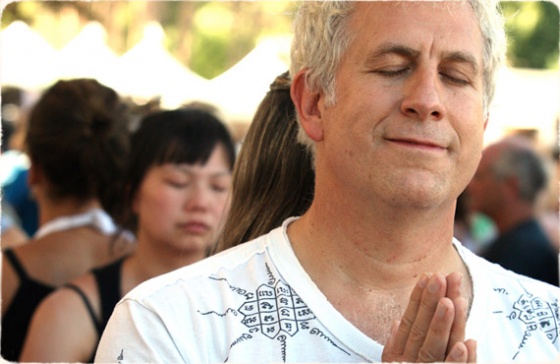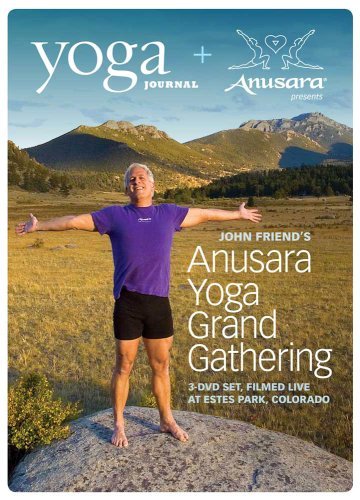 The Washington Post Style gods recently ran a long, long, long news feature that I am absolutely sure will be of interest to GetReligion readers. It contains all kinds of religious stuff – good and evil, sin and calls for repentance, claims of spiritual transcendence and healing.
Oh, and at the center of it all is a charismatic leader with near-miraculous levels of wisdom and insight. And did I mention that this story was quite long? How long, you ask? We're talking 3,600 words long – on a weekday.
The Washington Post Style gods recently ran a long, long, long news feature that I am absolutely sure will be of interest to GetReligion readers. It contains all kinds of religious stuff – good and evil, sin and calls for repentance, claims of spiritual transcendence and healing.
Oh, and at the center of it all is a charismatic leader with near-miraculous levels of wisdom and insight. And did I mention that this story was quite long? How long, you ask? We're talking 3,600 words long – on a weekday.
However, I am also sure that this is not a religion story.
I am sure that this is not a religion story because this is a feature about yoga and, as everyone knows, modern urbanites do not think that yoga has anything to do with religion. It's about spirituality. Maybe.
The story focuses on a scandal – sex videos, ego, drugs, money, the whole works – swirling around John Friend, the visionary rock-star-esque founder of Anusara, one of our age's most popular schools of yoga. The story notes that Anusara "combines rigorous physical poses with a philosophical framework, strict ethical standards and an emphasis on building a worldwide yoga community."
Early on, readers learn:
Friend’s empire – an international network that claims more than 1,500 teachers, including 25 in the Washington metro area, and 600,000 students – is in crisis now, teetering under the strain of a sex scandal that has split its most loyal practitioners and prompted an astounding venting of emotions, from rage and recriminations to compassion and sadness. In conference calls, e-mails and hushed conversations, Friend has admitted to sexual relations with students and employees and married women. He has confessed to cheating on one girlfriend and smoking marijuana, according to senior Anusara instructors who have participated in conference calls with him. And he has acknowledged leading an otherwise all-female Wiccan coven whose members sometimes took off all their clothes for gatherings, according to senior Anusara instructors who detailed his admissions in a written summary provided to The Washington Post.
So, was he, in fact, a guru? Did his approach to yoga make religious claims, did it promise to deliver spiritual experiences, did it offer something that for believers resembled transcendence? Or how about this rather basic journalistic question: Did his so-called "sermonizing" draw on specific religious texts and schools of Eastern thought? Just the facts, you know.
Trust me, there is much that I want to quote from a riveting story that goes on forever, and with good cause. However, here are the two chunks that I found the most, well, haunting:
“John made yoga more mainstream,” said Jordan Bloom, a respected Washington-based yoga instructor who has dropped his affiliation with Anusara. By offering a sense of community and a life-affirming philosophy, Friend was able to appeal to a broader range of people.
“People were experiencing transformations physically, emotionally and spiritually,” said Jackie Prete, a New York-based Anusara instructor who remains affiliated with the organization.
Friend’s engaging, welcoming manner put students and teachers at ease. He had a mop of curly hair, wore frumpy clothes and laughed easily. He was not built like the conventional image some have of yoga masters; he was no willowy, impossibly sinewy creature but instead stood on thick, powerfully muscled legs. He even had a bit of a double chin. He was preternaturally talented, but he seemed human. His style was “very lighthearted and yet not flippant,” Bloom said.
With the help of a deeply committed core group of teachers, Friend developed “the Ivy League of certification processes,” said Jane Norton, a Martha’s Vineyard Anusara instructor who remains affiliated with the organization. Certification could take years and cost thousands of dollars in fees and travel costs. Anusara placed a greater emphasis on spirituality and philosophy than some yoga styles. Classes began with an invocation on the “grace-bestowing power of universal Spirit within and around us.” Friend’s most loyal teachers say his approach relied on “the tantric philosophy of intrinsic goodness,” rather than tantra’s more sexual connotations.
 Nope, no signs of religion in there.
Nope, no signs of religion in there.
Soon after that, there is this whiplash passage:
Willow Street, which remains open but is no longer an “Anusara-dedicated” studio, was founded by one of yoga’s grandes dames, a beloved instructor named Suzie Hurley who is now 67 and calls herself one of the “grandmothers of Anusara.” Hurley and her son, Joe Miller – who recently bought the studio from his mother – spent the early 1990s studying at the Kripalu Yoga Fellowship in Massachusetts. Kripalu was rattled by a sex scandal in 1994 when yoga master Amrit Desai confessed to having sex with three of his students. Desai made a clean break with Kripalu, and the method survived, Miller said.
In the aftermath of the Kripalu scandal, Miller felt himself drifting from yoga. Then he met John Friend.
“He was just goofy and real and brilliant,” Miller recalled. “He really totally reinspired me.”
Now, it’s happening all over again.
“This is sort of the inherent flaw in the classic guru model,” Miller said. “In the yoga world, these cycles of destruction are what it’s all about.”
Like I said, this is NOT a religion story. Right? I am sure that I am the only reader who, while working my way through this long read, wanted the reporters to transcribe one of the guru's videos or audio recordings and then provide to readers a few chunks of what the man was actually teaching, a sample of the words that won over all of those devoted disciples and converts. In other words, while the history is interesting and the current scandal is gripping, I wanted a taste of the substance.
Maybe that's just me.
In conclusion, I want to ask GetReligion readers one simple question. This is a very straight forward story that treats the believers with a great sense of respect. The Post editors also signed off on that 3,600-word format. Why do you think this story got the space and the respect that it deserved?
